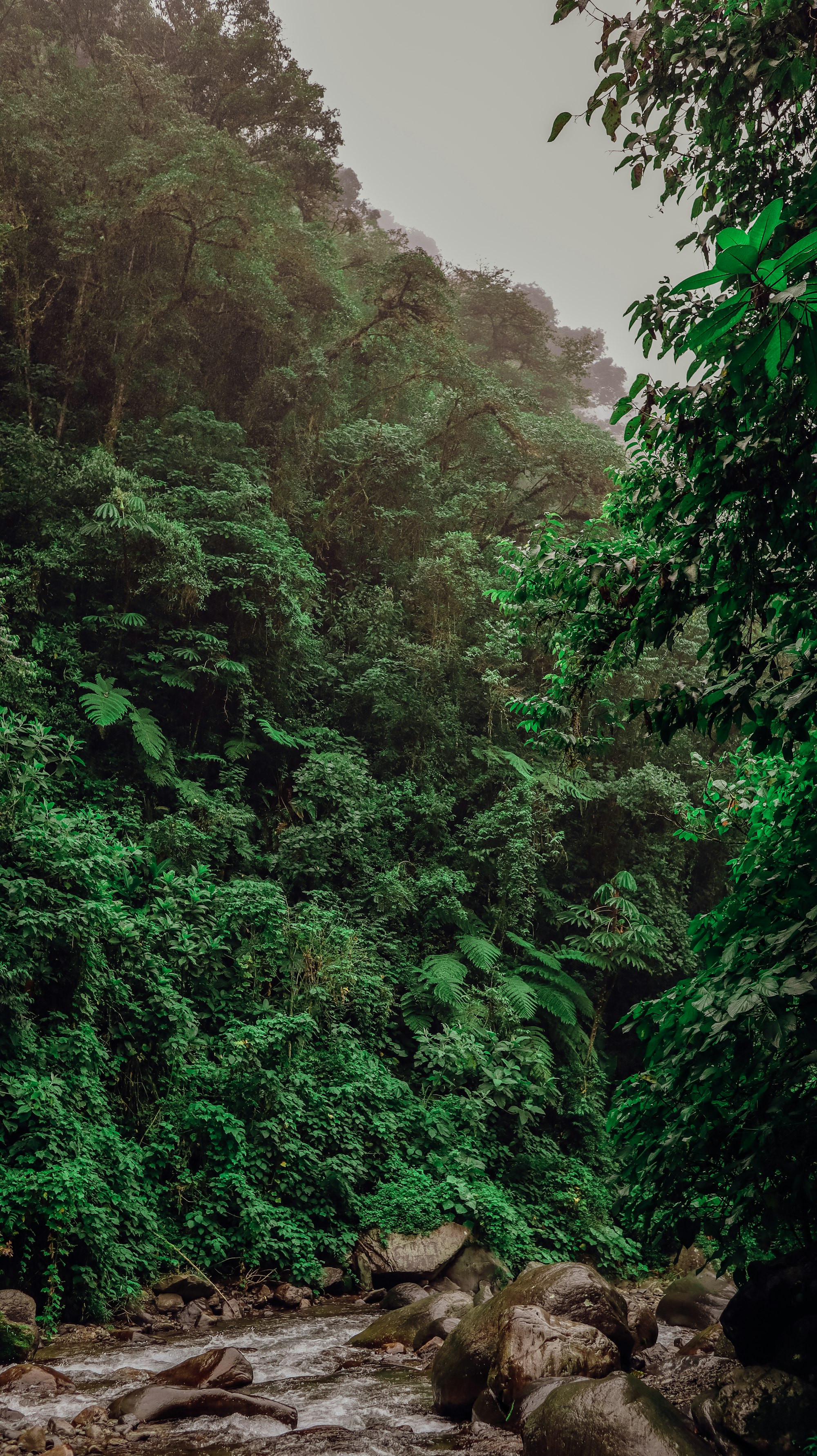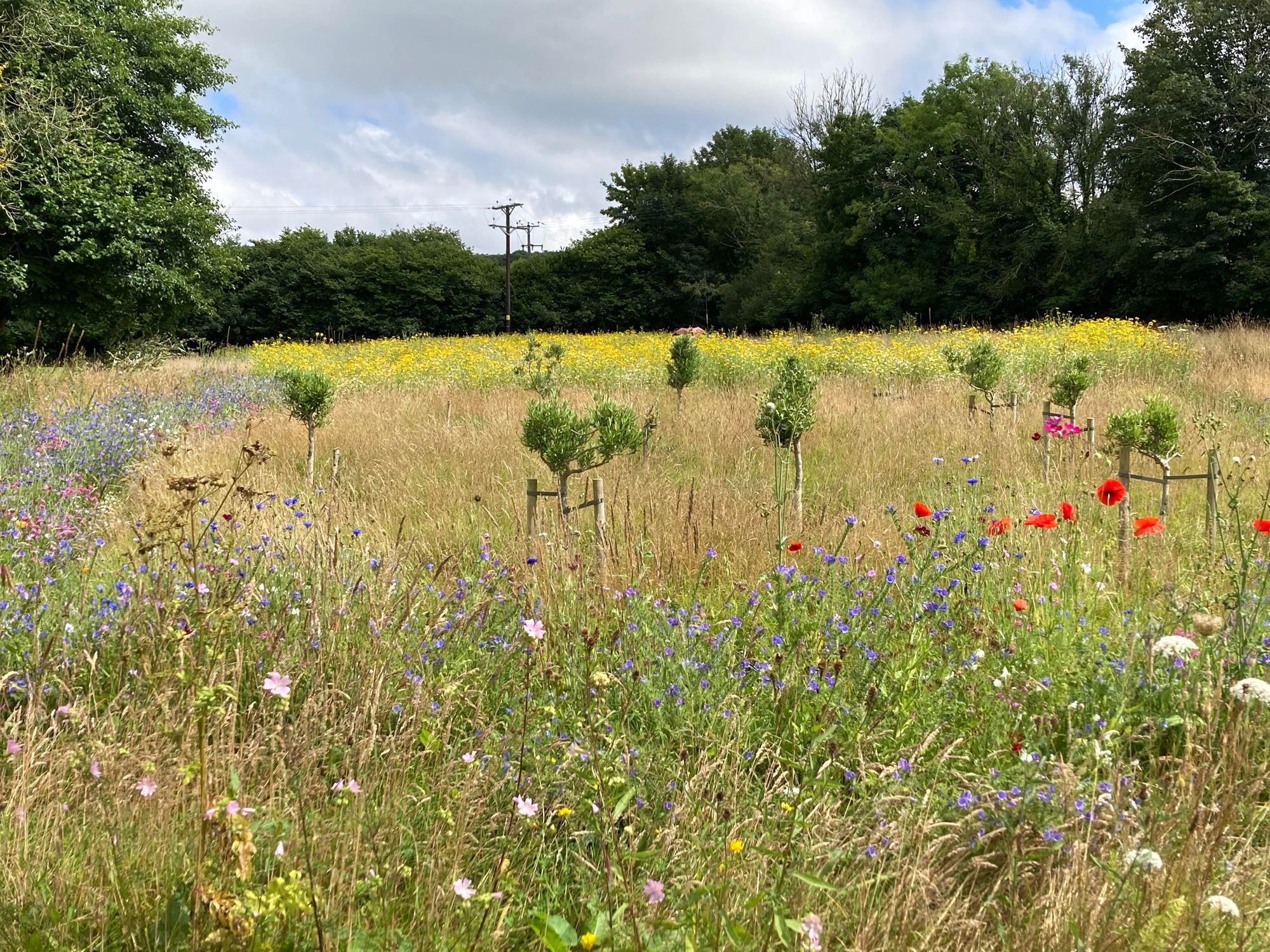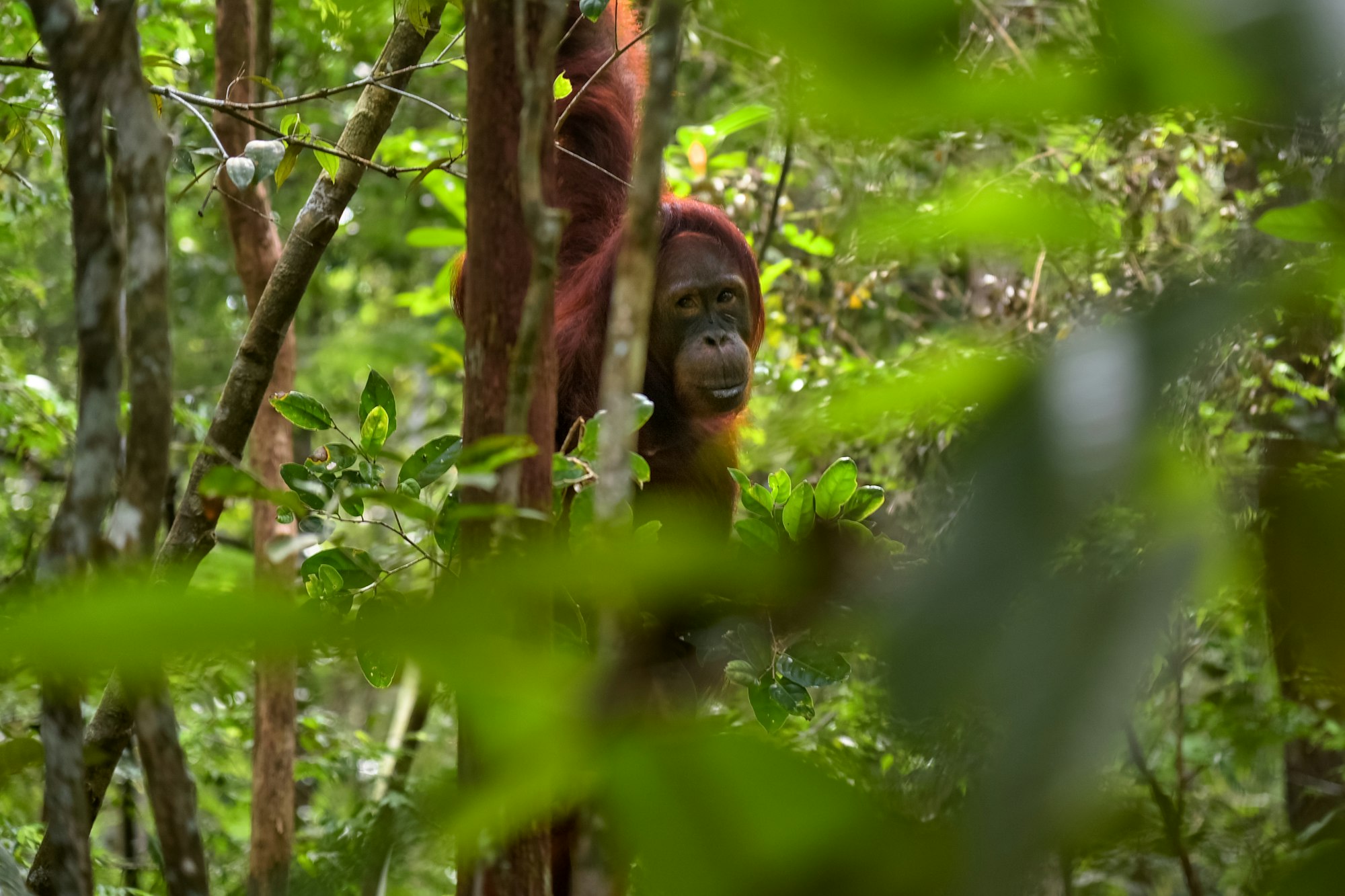How to Make Rights of Nature Possible: A Newcomers' Guide to Changing Our Relationship with Nature

By Håkon Evjemo
I am interested in ideas. I am interested in the hidden presuppositions we all carry that either help or hinder the lives we lead. The power of the law can certainly help protect and enforce ideas, but the ideas must always come first. I believe the Rights of Nature approach has to begin as an idea that wins people over before the work of obtaining legal recognition can really begin. This is why I want to engage with the idea of the Rights of Nature approach and ask what it is, why we might need it in the UK, and finally, how we might bring this idea to life.
Where are we now?
When an idea is shown to have repeatedly failed, at what point are we allowed to ask for something different? By most popular environmental metrics, whether it be river water quality, biodiversity loss, urban tree cover, woodland diversity, air quality etc, the steady decline in the UK’s natural world is an indictment of existing approaches to the management and protection of the environment. Combine this with the increasing urgency of the global environmental crisis and it is easy to understand and even share in the growing frustration across the country. River Action. Just Stop Oil. Extinction Rebellion.
We know how to identify and oppose examples of a failing system, but what positive, practical alternatives can we turn to?

The Rights of Nature approach is opportunistic and resourceful. It is able to harness available legal powers to create bespoke solutions to address seemingly unavoidable environmental harms. It has demonstrated that not only is change possible, but it relies on the participation of local communities standing up to protect what they love.
Does that ring any bells? It does for me. Given the increasing attention local communities are giving to worsening environmental issues, is it about time we start asking whether the Rights of Nature approach has any place in the UK?
Two Stages
For anyone interested in the UK Rights of Nature approach, or for that matter, anyone who feels short-changed by the UK’s failure to commit to existing promises, there are 2 types of questions that we may benefit from asking ourselves. These questions can be broadly summarised as follows:
- What is the Rights of Nature approach? Do I need a background in law to be involved? How does it apply to the real world? What kind of environmental problems is it meant to address?
- If we can identify the need for a Rights of Nature approach, under what conditions can it take seed and thrive in the UK’s particular social, political and legal landscape?
I believe that the more people who understand the Rights of Nature approach and see its potential in the UK, the greater the mandate to both campaign for and enact legal change. I want to think out loud a number of responses to the above questions, to improve the visibility of the Rights of Nature approach, in the hope of equipping all those wonderful people of action with ideas for an alternative future.
This blog post will deal with the first set of questions, with a second blog post to come to address the second set.

Introducing: Rights of Nature
Across the world this precise sentiment has fuelled the introduction and growth of the Rights of Nature approach. In short, this is about recognising that Nature has inherent value as active participants in the world, that moral rights come with this, and that our legal system should give elements of Nature legal rights to protect these inherent moral rights. The approach? Truly grassroots. Starting with concerned communities collaborating with environmental and legal organisations, it has taken off around the world, sprouting different legal forms in different legal jurisdictions under different socio-political climates.
Examples of legal change around the world include:
- Constitutional recognition of the rights of mother nature in Ecuador.
- Recognition of a rivers rights in New Zealand, India and South America and a lagoon in Spain.
- Local bylaws which recognise the rights of lakes and deny fracking activity in the US.
The rights which are commonly recognised include the right to exist, the right to ecological integrity, and the right to restoration. Declarations of sets of rights can be found in the Universal Declaration for the Rights of Mother Earth, or the Universal Declaration of the Rights of Rivers, as well as in particular legal interventions.
For more information about different interventions around the world, see here.
The Rights of Nature approach is opportunistic and resourceful, about using legal powers to transform how we relate to the rest of Nature and attempt to move us away from seemingly unavoidable environmental harms. It shows us that change is possible, and that it relies on the participation of local communities standing up to protect what they love.
Given the increasing attention local communities are giving to worsening environmental issues, is it about time we start asking whether the Rights of Nature approach has any place in the UK?
In the rest of this blog post, I will focus on one particular element of the Rights of Nature approach: participation in decision making. This aspect is a simple but flexible idea, one which permeates all walks of life and is in fact already shared by many. In doing so, I will try to dispel a few myths that tend to limit public engagement and unfairly distort what I will argue is a fairly uncontroversial idea: the extension of democratic participation to recognise Nature as a stakeholder.

Including the Non-Human in Decision-Making
In my opinion the idea is best explained like this: decisions are best made when all relevant stakeholders are adequately included in the decision-making process, whether as decision makers or beneficiaries of the decision. Here, we are expanding the scope to include non-humans as affected by our decisions, and so invited to think about what characteristics or functions of elements of non-human nature should be considered. For example, the flow of a river or its water quality. We can use the Rights of Nature approach to look at the environmental crisis through the lens of decision making and expand it so that all relevant stakeholders are adequately included, including nonhuman Nature.
This is in significant contrast to existing regulatory approaches, which are technical regulation of existing harmful activities. Whether that be fines for river pollution, the introduction of a carbon credit to let the invisible hand of the market decide, or setting minimum biodiversity standards subject to little actual legal pressure. It accepts certain environmental harms as a given and finds ways to manage and deter.
Yet these fail because when deterrents are financial, and for large companies, they just become part of the cost of business. Penalties and the cost of carbon credits can be absorbed into annual budgets. Moreover, this approach reacts to rather than prevents harm. I do not believe we can afford such luxury. The decision to engage in environmentally harmful activities is already made. When these decisions are made we see that many members of nature who are affected are not adequately included to voice their concerns.
Facing Our Opposition
This way of thinking about Rights of Nature can be presented in a way which might seem fairly uncontroversial. More participation means more dialogue and information, which makes for better decisions, both for all of Nature and for humans specifically. Consequently, any proponent of a robust and progressive democracy will understand that participation is a core democratic principle, the improvement of which leads to better outcomes in decision making. There is also the commonly accepted moral argument for including in decisions those who might be affected by them as a matter of justice.
There are many who will not countenance this because they think of everything non-human as existing for humans to use and abuse. Hopefully, we can open their eyes to this better way of understanding the world.
Yet there are also many who would oppose granting rights to non-humans for material reasons: anyone with an interest in profitable activities that are harmful to the environment. They understand the power involved in determining who is and is not included in decision making. If a river has no voice to express its concern, then they have no reason to consider it. The spirit of democracy, of dialogue, recognition and compromise, does not apply. And they can afford the fines, as we have seen over the past few years. They can continue negotiating with regulatory institutions as to the extent of the harm caused. As long as profits keep pouring in, why would they be in support of including potential nay-sayers?
This same group will likely oppose the Rights of Nature approach on the following grounds:
- Granting rights to elements of nature such as forests and rivers would challenge the absolute property rights which current owners have.
- Representing and enforcing such rights is thought to be vague and impractical.
These objections come from a place of thinking that non-human nature does not have any value, and therefore don’t place any weight on the importance of open dialogue and discussion that comes with a focus on improving decision making through involving elements of Nature. It is easy to frame the Rights of Nature approach as a land grab when you ignore that non-human nature has any value. And instead of opposing its inclusion due to being impractical, the question would instead be how we can make it work best. Yes, sometimes decisions are made in favour of some rights over others, but the rights-based landscape is not a zero-sum game. Often the compromise is baked into the decision process that weighs up different rights and how they are affected by the outcome of the decision. This is exactly why we need to focus on including non-humans in decision making. Far from being undemocratic, this is democracy in action.
The same goes for the question of how to represent and enforce those rights. To any company that makes this criticism, we can redirect the question. How can you represent and enforce the rights of a company? How do you know what your company wants? In the same way that board members are elected at the head of a company and held legally accountable for protecting share value, people with knowledge and care for non-humans can be elected as guardians of nature that can represent nature’s interests. Again, this is all about setting out a decision-making process and including all relevant stakeholders. It goes back to extending democracy to the places it so desperately needs to go.
When we think of the Rights of Nature in terms of improving decision-making we give a much needed context to dismantle the above criticisms and stop the rot of ‘nature-less' decision making at the core.

Do I need a background in law to engage with and implement the Rights of Nature approach?
No. But I can understand why many might think so. For newcomers, the Rights of Nature approach has a tendency to appear in exclusively legal terms that often presumes a certain level of legal understanding. We have an intuitive understanding of what a right is, but a right only really makes sense if we also understand the legal landscape in which they operate. While an understanding of a legal landscape is (rightly) assumed in legal circles, that same demand for legal understanding can act as a barrier for entry for newcomers who either lack a legal background or have no interest in it. The onus is on us, the advocates of the Rights of Nature approach, to show that legal understanding is not a pre-requisite for engaging and making a difference. Rights of Nature is SO much more than a legal doctrine. We need to find a way of talking about rights without backing ourselves into a legal corner and thereby limiting potential engagement.
Focusing on the element of participation in decision-making is a way of opening up engagement away from legalistic rights discourse. We make decisions by ourselves and in groups. Should I drive to work or get the train? Should I plant an ecologically redundant plant in my garden, or opt for the messy, bee loving variety? Should the local council consider the interests of the river when dealing with river pollution, or is engagement with water companies sufficient?

You do not need a law degree to be involved in these kinds of decisions. You do not need a law degree to understand when organisations in positions of power make decisions without considering the non-humans they might affect. And most importantly, you do not need a law degree to engage in your own and collective decision-making with the aim of improving participation for non-humans.
A second point is that while legal recognition of rights is the key objective (because it makes non-human inclusion in decisions legally enforceable), any successful legal action relies on local communities coming together to establish local mandates. Environmentally conscious barristers like Lawyers for Nature's Paul Powlesland, who has developed a national reputation for coming to the legal aid of tree protesters, rely on local residents taking to the streets to protect the interests of the trees about to be felled. The same goes with the rights of rivers. Local councils in areas with a strong appetite for protecting their rivers are more likely to organise and push for radical change. This is what makes the Rights of Nature approach so appealing. It offers people who feel disenfranchised and unheard an opportunity to build a local base and make a real difference in their community.
There is no need for a background in legal theory or case law. Entry is free. If you care about your local area, if you like to work with others, if you want to use your own skills to bring people together, then the Rights of Nature approach has a place for you.
Including Nature in Decision Making
Everyone can understand and has access to decisions at the personal, community and national level. The same cannot be said for existing mechanisms that confine power and responsibility to ministers or government bodies such as the Environment Agency. Many of us are now familiar with the feeling of being reduced to bystanders while sewage is pumped into our rivers or our local trees felled. Within the existing system, what else can we do other than lobby our MPs or take direct action?
The Rights of Nature approach flips the script. I believe it does what all political campaigns hope to do: convert local and national enthusiasm into real political and legal gains. It does this by opening up the sphere of possible action to the everyday world and the decisions that occur within it. This is a radical move. If those in power won't give non-humans a seat at the table, then we'll make our own table and decide for ourselves. The key point is that the Rights of Nature approach is not limited to sites of action where laws are made, though many successful Rights of Nature approaches will end up there. Consider the growing interest in rewilding projects across the country where we leave nature to regenerate by itself, or the first instance of giving nature a seat on a company's board (of which Lawyers for Nature played a leading role).
These are two very different areas of decision-making that have found a way to give non-humans a seat at the table. Admittedly, sometimes a bit of legal expertise is needed to bring certain ideas to life, offer legal support in tricky situations or formalise existing methods. But that is why organisations like Lawyers for Nature have started to appear: legal support for those involved in grassroots projects aimed at protecting the interests of non-humans and including them in the decision-making process. Lawyers for Nature know you are out there, and they want to help.
What kind of environmental problem is the Rights of Nature approach meant to address?
Are we dealing with specific non-humans like rivers or forests? Or does the approach look at it from the perspective of identifying and replacing specific environmental mechanisms and regulations that have shown to fail? Does it even matter?
The Rights of Nature approach is flexible enough to attend to all sorts of non-humans at the general and specific level. So far, across the world, the Rights of Nature approach has been used to campaign for the rights of rivers, lakes, forests, mountains, mother nature, seas, marine basins, plants, chimpanzees, orangutans, orcas, jaguars and bees. The list goes on.

Often successful campaigns are the product of a local, coordinated response to an acute and immediate threat to a specific non-human. The evidence of harm is clear and existing mechanisms to protect that nonhuman have been shown to fail.
What can we learn from this?
No non-human is off the table when campaigning for rights, but we should probably focus on those under clear threat and/or who are the subject of an existing network of care and support. For the UK, this narrows down the pool to a select few types such as our rivers and lakes, ancient woodlands, and peat land.
Work is already underway to recognise the rights of rivers. We know they are under threat from excessive pollution via water companies and the waste runoff from adjoining agricultural land. Local councils have started engaging with the Rights of Nature approach with some success, and the approach is spreading to other areas. Work can still be done to formalise and spread this approach to other rivers and find ways to guarantee the protection of our woodlands and prevent peat land burning.

If we can identify the decisions that contribute to harm caused to these non-humans, then perhaps we can start thinking about how to engage with those decisions and campaign to include ancient woodlands and peat land in the decision-making process. The next blog will follow on from this and ask what people can actually do in their local areas to introduce the Rights of Nature approach, and what obstacles they will meet?
Subscribe to Lawyers for Nature & Join our Community
If you are on the website, enjoyed this blog and are yet to subscribe to the Lawyers for Nature newsletter, you can click the button at the bottom right hand corner of this page, or simply click here. You can also use our Contact Page if you would like to reach out directly, or simply join our Community Discord Server.




